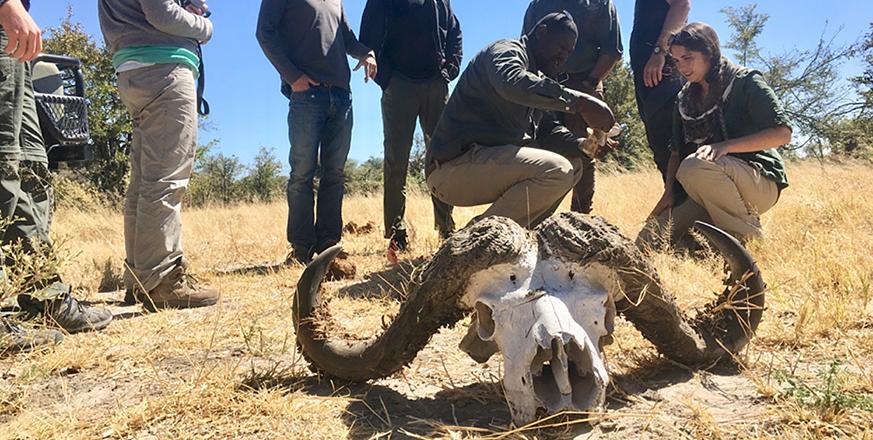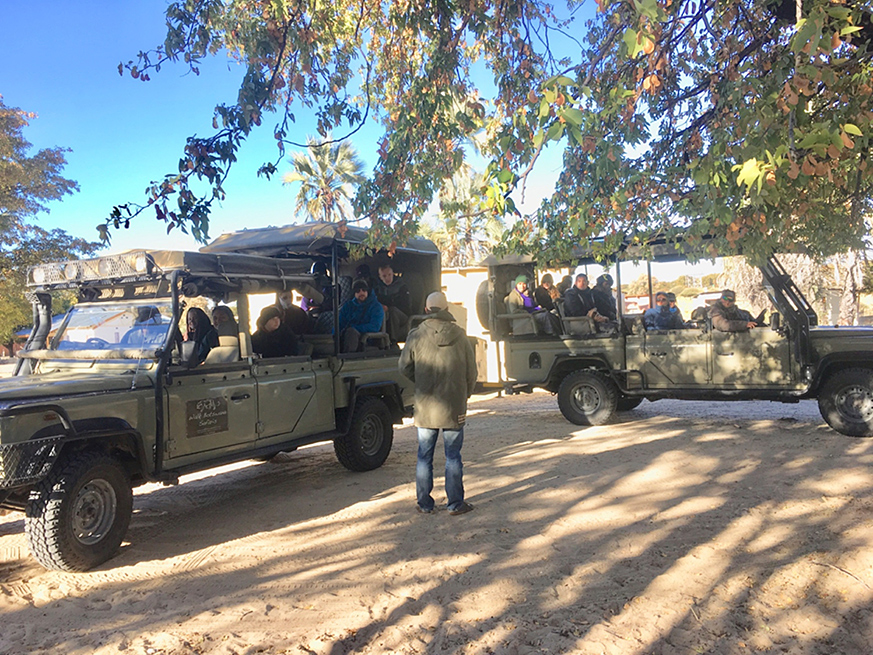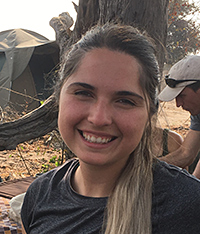Notes from the Field: Maria Viteri - From Maun to the Kwai Community Wildlife Area

After over 24 hours of flying and a couple of comfortable nights in Maun, our journey to the Okavango Delta has begun. Despite our varying levels of jetlag we are all excited to head into the wilderness, or what people here call "the bush." Our group, chatting excitedly, piles into two rather impressive vehicles. Although we have spent months preparing for this trip, we never fully registered that it was happening until this moment. We are practically bursting to get into the bush and spot our first animals. On the way, however, we stop at a village which most tour groups blow through. The village is at the edge of the wilderness and its people are constantly interacting with the animals that are so exotic and exciting to us foreigners. Many of these animals are very dangerous and consistently destroy crops and, in some cases, attack people. Tour companies politely call these incidences "human-wildlife interactions;" we prefer the term "human-wildlife conflict." The mood of our group is deflated by some, but we continue on, wiser for our stay.

Our first spot is a herd of impala which spooked when we approached, indicating that there are still hunting pressures in the area despite restrictions. Only a half hour later we see our first giraffe, his skull misshapen with bony growths. One after another we spot incredible wildlife with their own fascinating stories. Each is more amazing than the next.
My favorite spot of the day is not a living animal but a long dead one. We come across the remains of a large buffalo which our guide tells us was killed by a pack of lions in 2014. You can tell a great deal about the life of an animal from its bones. From the horns we can tell his sex and by his worn teeth and arthritic joints we know that he lived a long life. Even after the old bull's death, his bones continue to tell new stories. Dripping from his horns are brown cocoons created by Horn moths which feed on the horn's keratinous shell as they develop. These moths have since emerged from these cocoons and flown away to begin the life cycle over again, leaving behind only these bizarre shells.
Our day's journey ends in the camp that we will call home for the next three weeks. We head to our tents, exhausted but excited for the days ahead.
 Maria Viteri is a Stanford PhD student in the Hadly Lab
Maria Viteri is a Stanford PhD student in the Hadly Lab



